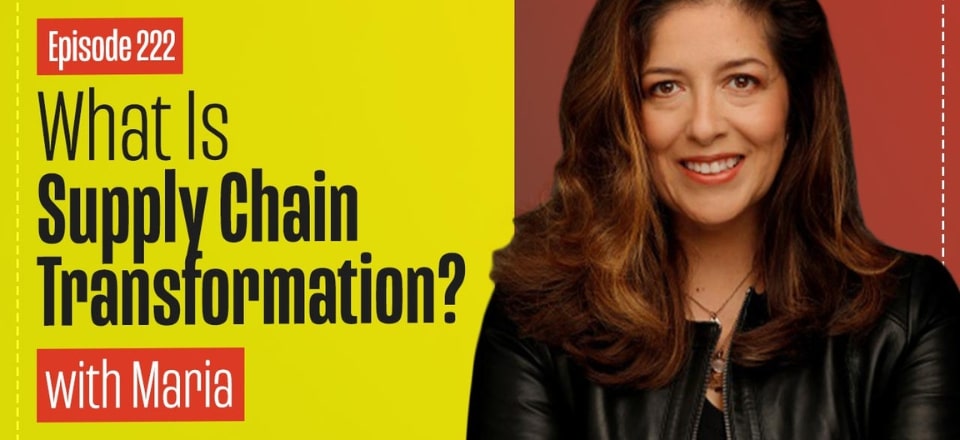What is Supply Chain Transformation?
What are the key aspects involved?
How does it affect people?
Watch the video below to hear from the expert, Maria Villablanca, and gain valuable insight into the main areas of transformation that people are embarking on.
Supply chain transformation has become a crucial topic in today’s fast-evolving business landscape. Maria Villablanca, an expert in this field, provides valuable insights into what this transformation entails and how it impacts businesses.
Understanding Supply Chain Transformation
Supply chain transformation involves more than just adopting digital technologies. It encompasses a comprehensive change in thinking, processes, and culture within a company. Historically, supply chains were linear and often relied on manual processes, such as filling out paperwork in triplicate. However, with the advent of digital tools, companies have begun to shift towards a more integrated and transparent approach.
Maria notes that the transformation began with digitalization, but it has evolved to address broader changes. The COVID-19 pandemic accelerated this shift, highlighting the need for supply chains to adapt to new realities. This transformation now includes not only the digitization of processes but also the rethinking of supply chain structures to improve visibility and efficiency.
Key Areas of Supply Chain Transformation
1. Digital Advancements
A significant part of supply chain transformation is the integration of digital technologies. This includes moving from outdated practices to leveraging data analytics, generative AI, and other advanced tools. These technologies help in making faster, data-driven decisions and enhance transparency across the supply chain.
2. Business Model Changes
Companies are increasingly adopting new business models, such as direct-to-consumer sales. This shift, often driven by e-commerce and the so-called Amazon effect, requires supply chains to be more agile and responsive to direct customer needs.
3. Sustainability
Transforming supply chains also involves a focus on sustainability. For instance, Coca-Cola’s initiative to tether bottle caps to the bottles themselves is a prime example of how companies are redesigning their processes to reduce waste and improve environmental impact.
Implementing Supply Chain Transformation
For businesses considering supply chain transformation, Maria emphasizes that it’s not just a large-scale overhaul but a continuous process. Companies should start by identifying specific areas where transformation can add the most value. This could be in procurement, data management, or other critical areas. The key is to avoid chasing trends like AI or robotics without a clear problem to solve.
A common mistake is the “shiny object syndrome,” where businesses invest in new technologies without addressing underlying issues. Instead, Maria advises focusing on solving concrete problems and improving processes incrementally.
For more insight, watch the complete video above.
Connect with Maria here:
YouTube: https://www.youtube.com/@MariaPVillablanca
Website: https://www.mariavillablanca.com/
Linkedin: https://www.linkedin.com/in/mariavillablanca/
And listen to Maria’s podcast here: https://podcasts.apple.com/gb/podcast/transform-talks-the-supply-chain-transformation-podcast/
Related articles on this topic have appeared throughout our website, check them out:
- Future Supply Chain Insights from Pro-to-know, Sheri Hinish
- These Three Technologies are Hot, But Are Supply Chains Adopting Them?
- Supply Chain and the Internet of Things – Towards New Paradigms
- Change Leadership: The Real Key to Transforming Your Supply Chain
- 6 Steps to Sustainable Supply Chain Reality
Editor’s Note: The content of this post was originally published on Logistics Bureau’s website dated February 14, 2024, under the title “Understanding Supply Chain Transformation with Maria Villablanca“




